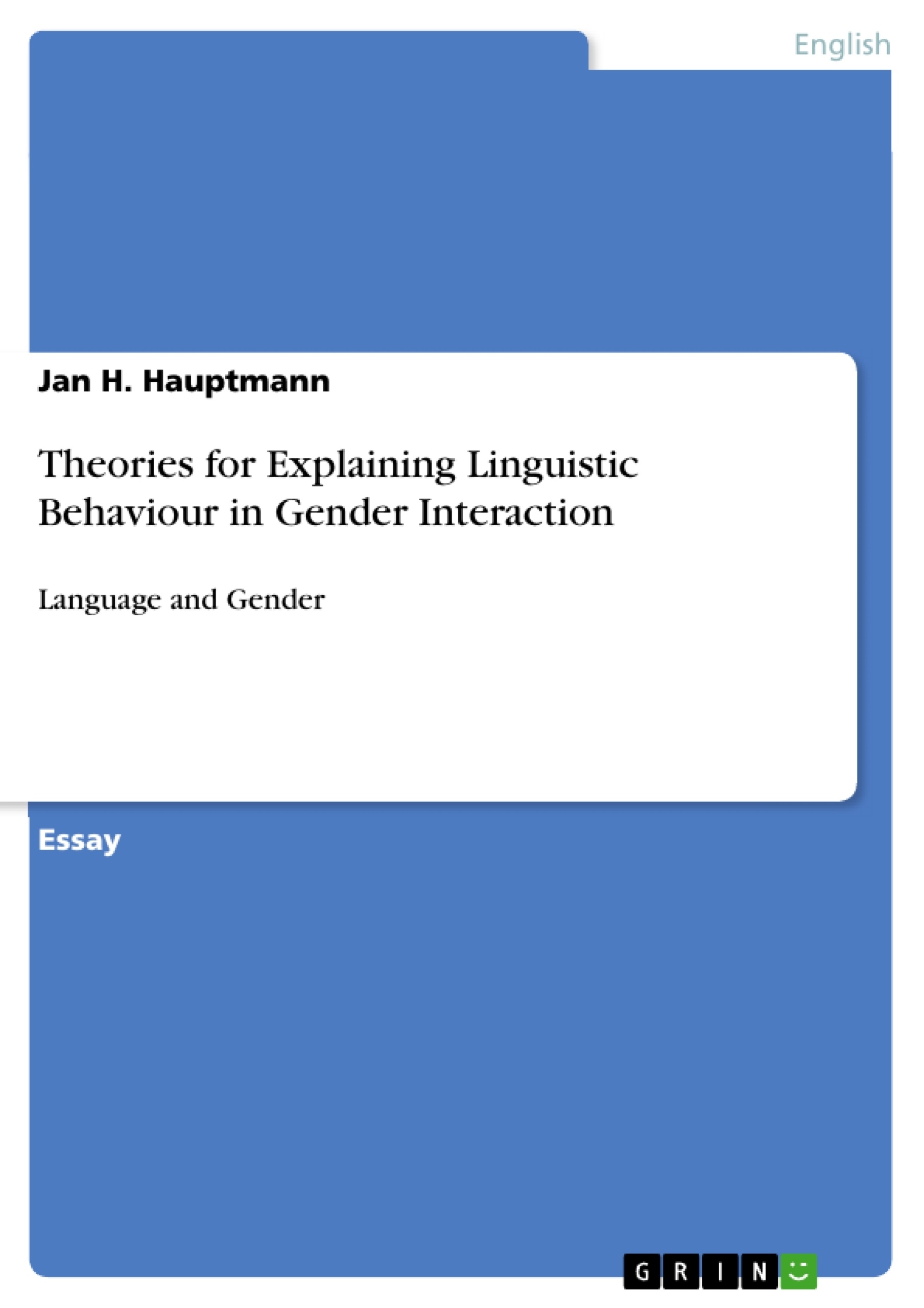Already in the 1960s and 70s have feminist linguistics started to examine language on the basis of gender questions. Numerous works focused on the problem whether women are discriminated through a more powerful “male” language use and how sexist language might be avoided. Within the subject, several different theories arose. This essay will at first demonstrate the development process of two main theories dealing with gender and language (the so called dominance and the difference-theory) and afterwards assess their adequacy in explaining linguistic behaviour in gender interaction. In 1973, Robin LAKOFF, a feminist linguist at the University of California, laid the foundations for a methodical and academic research on the subject of women’s language. Her most important works Language and Woman’s Place and Women’s Language threw light upon the possibility of discrimination through language use. A very important example for such a case might be LAKOFF’s observation of the way how women see themselves and which role they are holding within the American society. Thus, LAKOFF does not only examine the specific language used by women, but also the language used about women . Since language is guided by our thoughts, she considers it to be a mirror of the speaker’s subconsciousness . In order to investigate this phenomenon more closely, LAKOFF scrutinized her own expressions as well as expressions of friends and acquaintances. Furthermore, she analysed conversations in the television programme. As the field of this small study was very restricted, no universality is claimed for its results , but as an outcome, several criteria are established that are seen as typical for women’s language. These standards are as follows:
Table of Contents
- Introduction
- The Deficit-Theory
- The Dominance-Theory
- The Difference-Theory
- The Powerless Language
- Conclusion
Objectives and Key Themes
This essay examines the development and adequacy of two prominent theories in gender linguistics: the dominance and difference theories. It delves into the concept of "women's language" and its relationship to power dynamics within social interactions. The essay evaluates the theories' ability to explain linguistic behaviour in gender interaction, drawing on key research by feminist linguists.
- The development of "women's language" theories
- Power dynamics in language use and gender interaction
- Criticisms and limitations of deficit-based approaches
- The role of social context and power structures
- The distinction between biological sex and social gender
Chapter Summaries
The essay begins by introducing the concept of "women's language" as explored in feminist linguistics. Robin Lakoff's groundbreaking work "Language and Woman's Place" is examined, highlighting her observations on the characteristics of women's language and their potential implications for power imbalances. Lakoff's theory is then critiqued for its limitations, particularly its failure to consider the possibility of men utilizing "women's language" and vice versa.
The essay continues by exploring the work of Zimmerman and West, who investigated overlaps and interruptions in conversations between different sex pairs. Their findings suggest an asymmetry between speakers based on their social status, lending support to the dominance theory. O'Barr and Atkins' research on courtroom interactions provides further evidence for the notion of "powerless language," emphasizing the influence of social context on language use rather than innate gender differences.
The essay concludes by discussing the limitations of both the deficit and dominance theories. It emphasizes the need for a more nuanced understanding of gender and power dynamics within language use, recognizing the socially constructed nature of gender.
Keywords
The main keywords of this text include: gender linguistics, women's language, dominance theory, difference theory, deficit theory, power dynamics, social context, language use, gender interaction, feminist linguistics, social status, power structures, sex, gender.
- Quote paper
- Jan H. Hauptmann (Author), 2006, Theories for Explaining Linguistic Behaviour in Gender Interaction, Munich, GRIN Verlag, https://www.grin.com/document/118364



